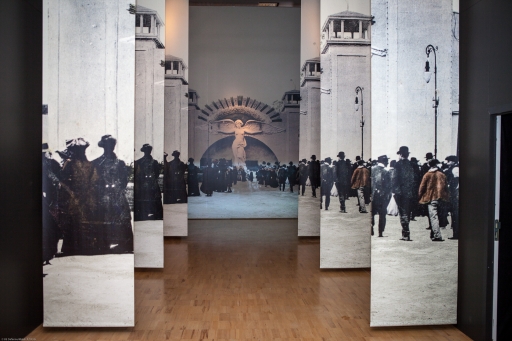The Royal Museum of the Army and Military History in Brussels has opened a major exhibition to mark the Centenary of the First World War.
It will run from the 26th February 2014 until the 26th April 2015.
Entitled, 14-18, It’s Our History!, the exhibition focuses on both the Belgian and European dimensions of the First World War and has been organised with the support of the Museum of Europe.
Belgium’s unique experience of almost total occupation during the First World, coupled with its modern role as the capital of the European Union, is one of the reasons why both the national and European experiences of the conflict will be considered.
“The entirety of Europe’s history emerged from the First World War”, the museum states.
The exhibition plans to explore the military, political, societal, demographic, economic and cultural impact of the conflict.
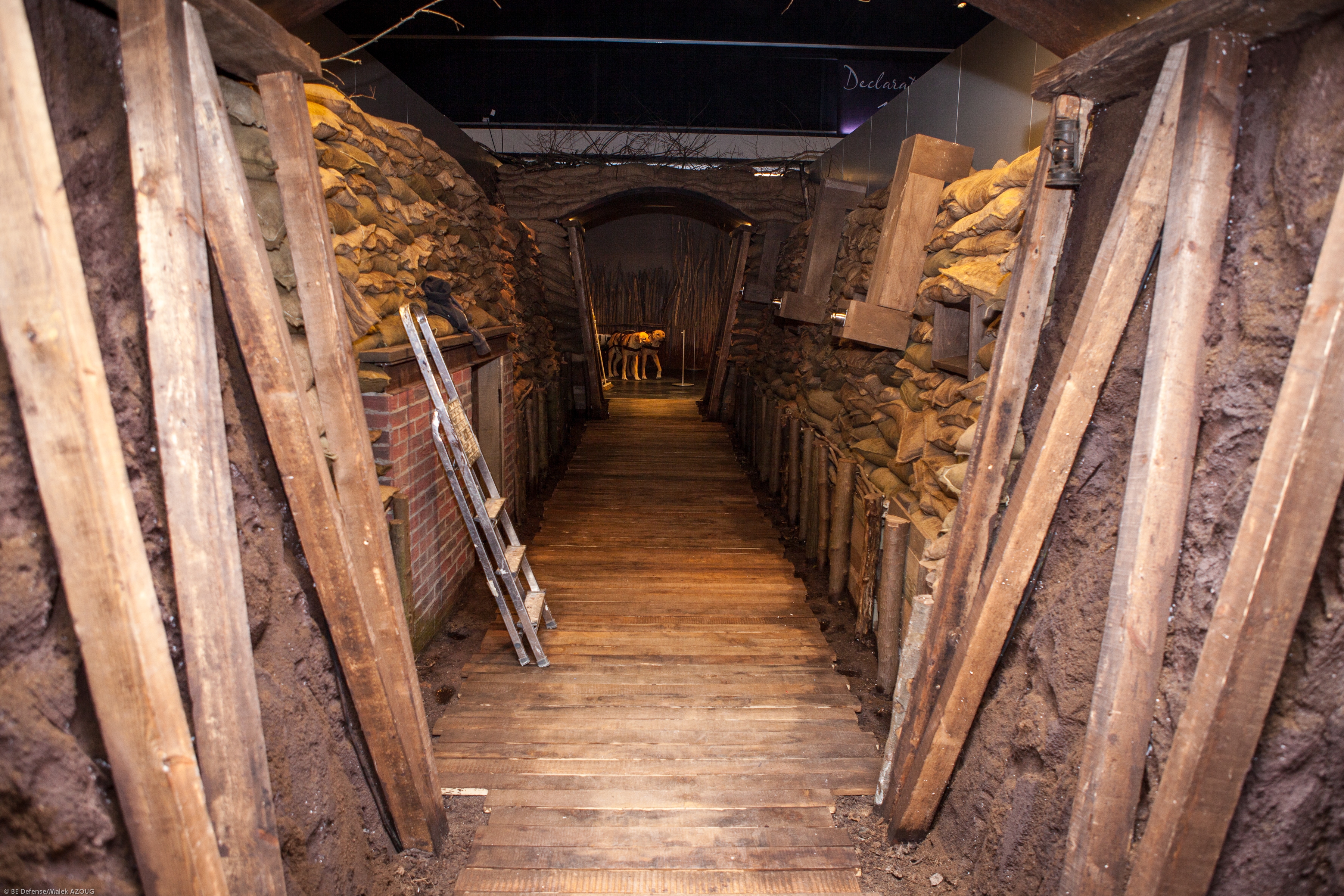 A recreated Ypres trench
A recreated Ypres trench
Exhibition
The exhibition will take visitors on a journey through pre-war Europe to the Treaty of Versailles and the consequences of the conflict.
Objects from the collections of the Royal Museum of the Army and Military History, including heavy artillery, trench art and uniforms will all be on display, alongside the German ultimatum addressed to Belgium on the 2nd August 1914 and the Belgian copy of the Treaty of Versailles.
A series of photographs ranging from German mobilisation, through the occupation of Belgium, to the German departure from Belgian soil, will be projected onto large screens at the exhibition, whilst archive film footage from the conflict will also be displayed.
The museum has placed a particular emphasis on creating an “immersive” experience for visitors.
The exhibition has created a series of war-time sites, which demonstrate life under German occupation, as well as life on the frontline. The recreation of a trench at Ypres aims to give visitors an idea of the conditions faced by soldiers.
The Kommandatur, a bistro, a food shop and a prison from the period have also been created.
A theme which will run through the exhibition is the comparative roles of Germany’s Kaiser Wilhelm II and Belgium’s King Albert I during the conflict.
Photos and personal belongings of the two monarchs will be displayed throughout the exhibition, in order to provide visitors with insights into the lives of “two of the main protagonists” of the First World War.
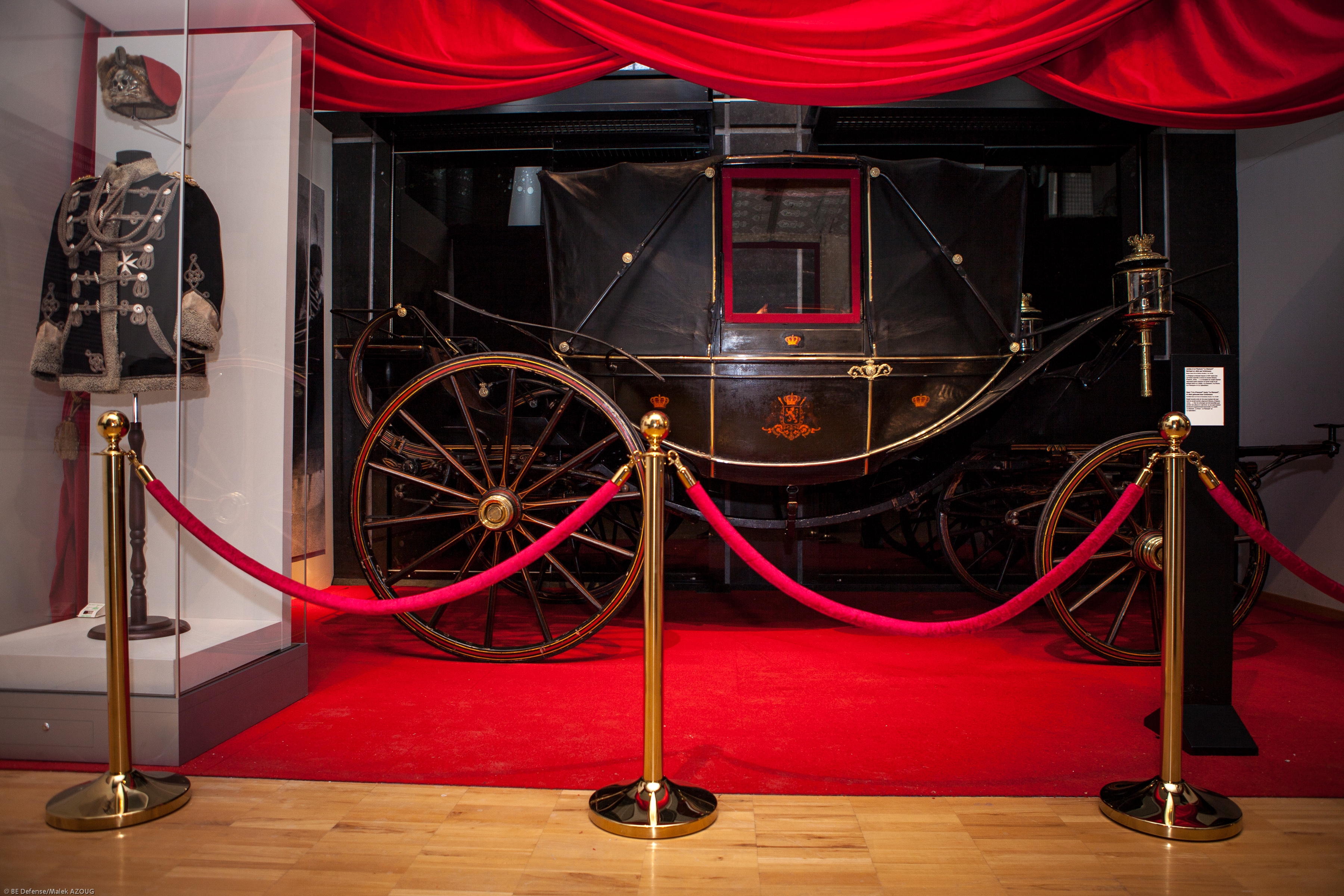 Royal carriage
Royal carriage
In partnership with Huis Doorn in the Netherlands – Kaiser Wilhelm’s residence after his exile in 1918 – a series of his uniforms and personal items are being lent to the Royal Museum of the Army and Military History in Brussels for the exhibition.
The Royal Museum of the Army and Military History will be displaying King Albert’s own military uniforms.
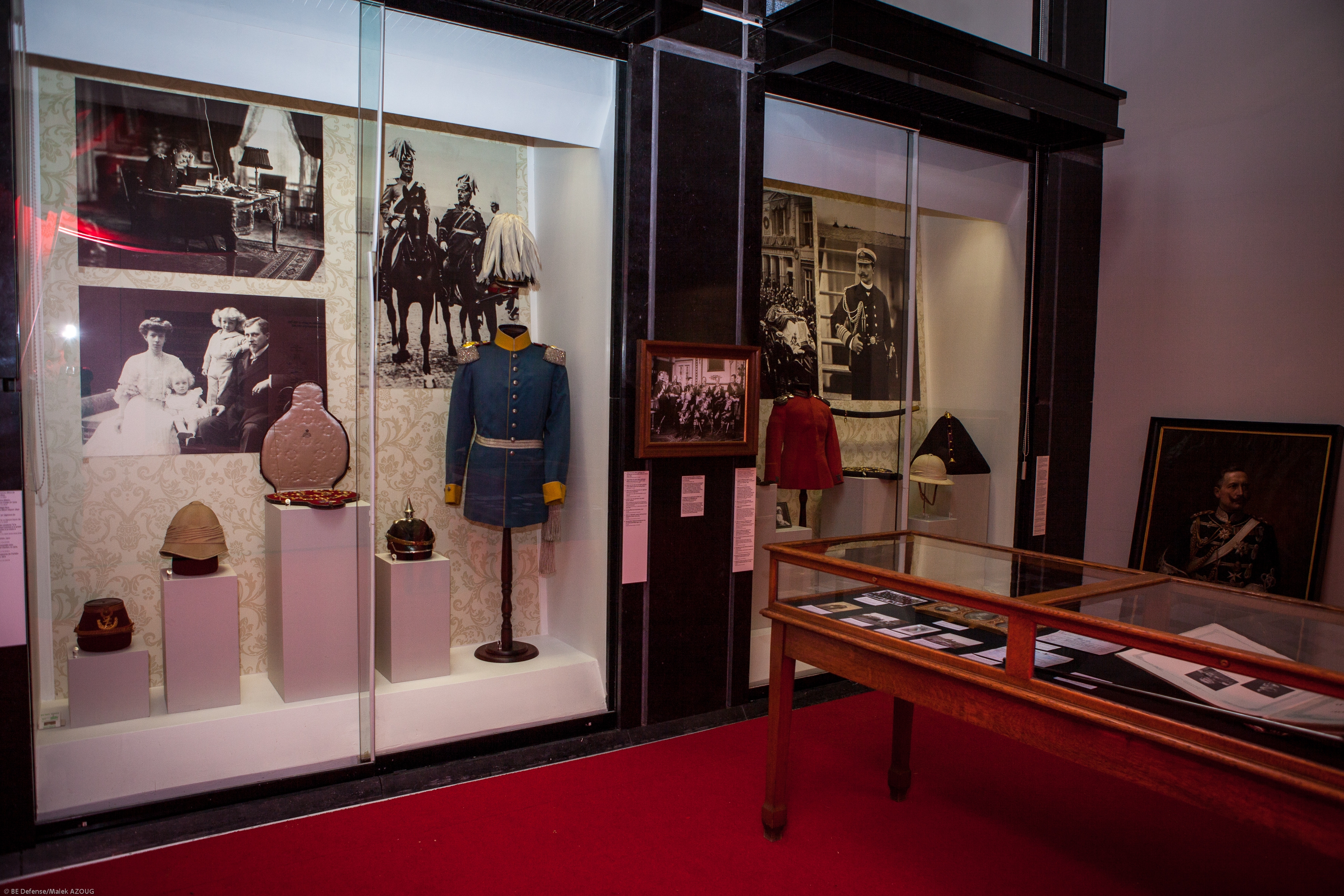 Part of the collection of items of King Albert and Kaiser Wilhelm
Part of the collection of items of King Albert and Kaiser Wilhelm
Conscious of portraying both the military and civilian aspects of the conflict, the exhibition will be punctuated with personal testimonies by those who lived through it, which will have been voiced by actors and superimposed over images and film footage.
Interactivity has also been considered by organisers. They have decided to limit technology – such as touch-screens – due to “the emotional strength of the collections and archives on display”.
However, interactivity is being utilised in other ways, particularly in order to engage with younger audiences.
The organisers of the exhibition decided that children’s familiarity with animals would serve as a means to make aspects of the conflict accessible to them. The role of animals in the First World War will therefore be explored through several games. This, the museum states, will “allow children to discover the importance of animals on the front and in everyday life under Occupation and, as a result, the lives of their forefathers during the conflict”.
Furthermore, school groups accompanied by their teachers will have the opportunity to share their opinions on the conflict at the end of their visit. Short filmed sequences introduce topics for debate, such as: ‘fatherland’, ‘honour’, ’empire’, ‘nationalism’, ‘flag’ and ‘Europe’ and what these ideas mean to them today. The question “for whom and for what are they prepared to die for?” will also be posed.
Layout
With a seven stage layout, the exhibition will take visitors on a journey from pre to post-war Europe.
1. Triumphant Europe
The exhibition will open with an exploration of early twentieth century Europe. Visitors will learn about “World Europe”: the power of empires; systems of alliance; scientific, cultural and technological progress; as well as the growth of nationalism; social change; and the growing friction between the Great Powers.
2. The Beautiful Summer of 1914
Described as a presentation of “the dominoes toppling” which would lead to war, this part of the exhibition will contrast the “carefree” build-up to the conflict through original testimonies with the flurry of diplomatic cables and later ultimatums which flooded Europe in July-August 1914.
3. Belgium at the Heart of a World War
A large map of Belgium covers the floor at this part of the exhibition, flanked by pieces of artillery and dog-drawn machine guns which were used during the First World War.
Key areas of the conflict, including Liege and Mons, will be highlighted and touch-screen technology will provide visitors with specific information about the action these areas saw.
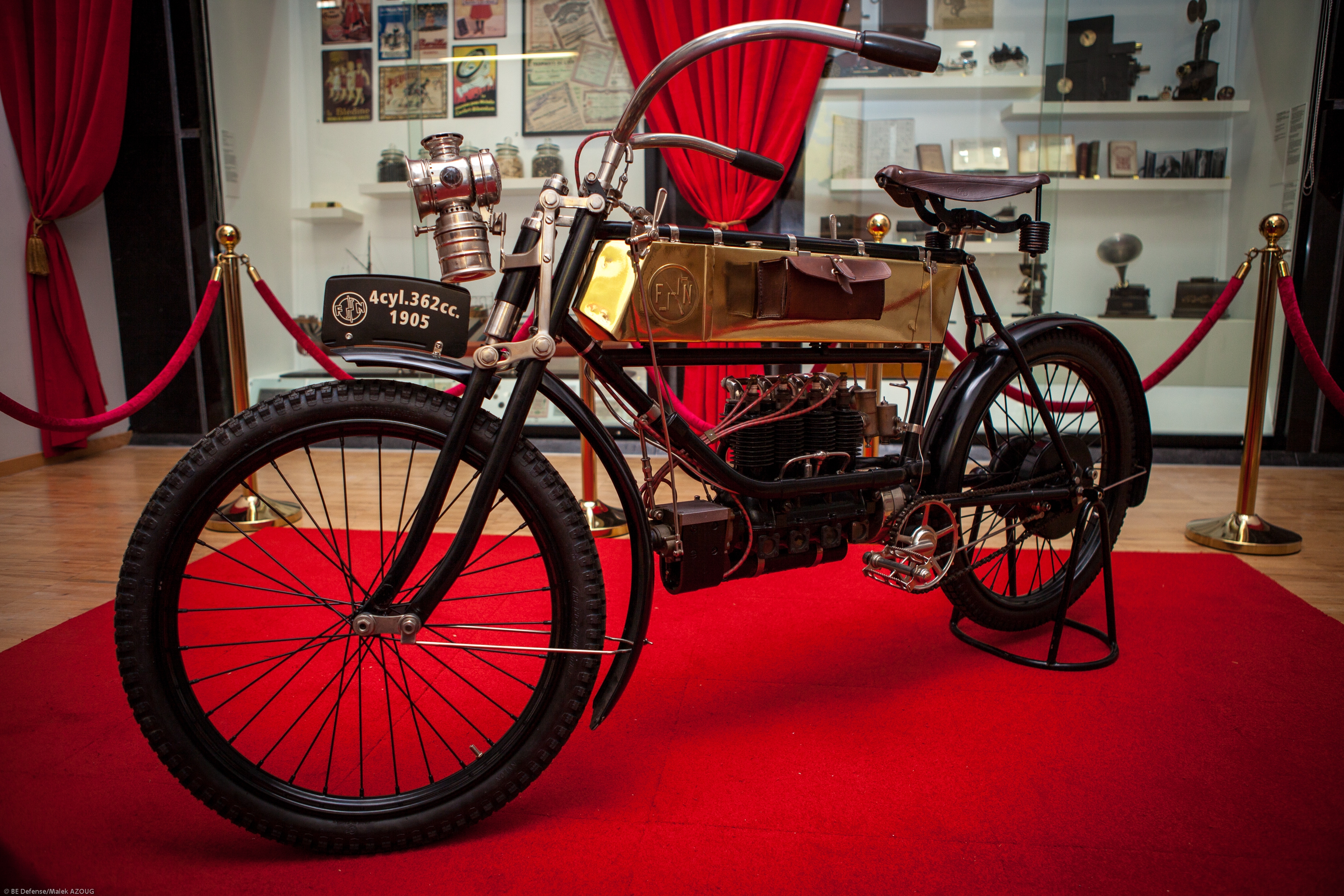 A First World War motorcycle
A First World War motorcycle
Five large screens will show images and archive films, accompanied by civilian and soldiers’ testimonies. A large timeline will also explore the global dimension of the conflict.
4. The Belgian Front
The experiences of warfare on the military and civilian population of Belgium, including the physical and mental suffering endured, will be presented to visitors inside a trench which the museum has specially recreated.
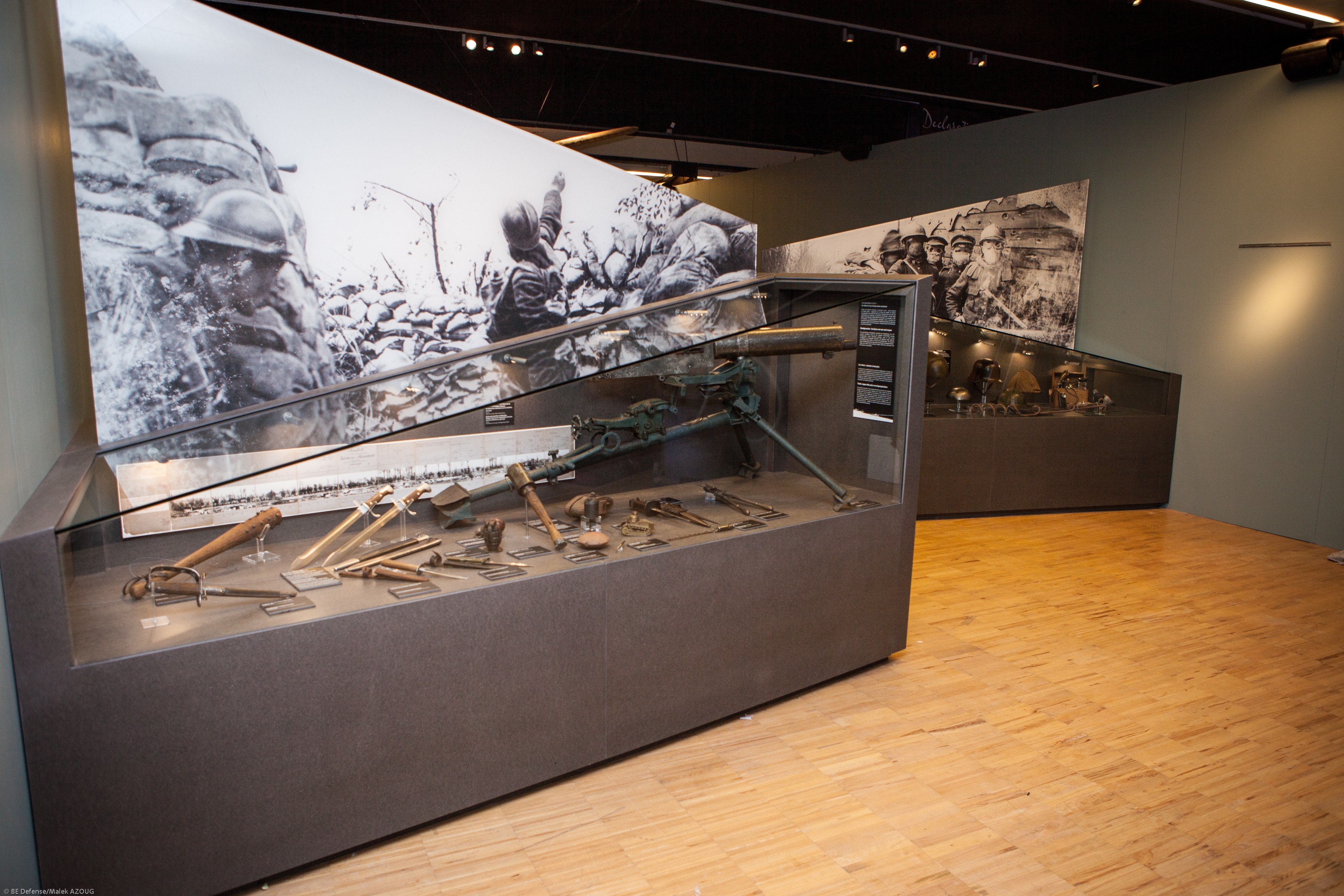 A selection of weapons from the conflict
A selection of weapons from the conflict
A special area will explore the confrontation between King Albert and Kaiser Wilhelm.
5. The Occupation
The museum has recreated the Kommandantur of Belgium – “a symbol of a country ransacked and held to ransom” – accompanied by original objects from the period.
Further archive images accompanied by testimonies will be presented to visitors, with the aim of showcasing “everyday life” of Belgians under Occupation.
A recreated American shop – which distributed foodstuffs and essential goods – and a bistro have also been built for this part of the exhibition.
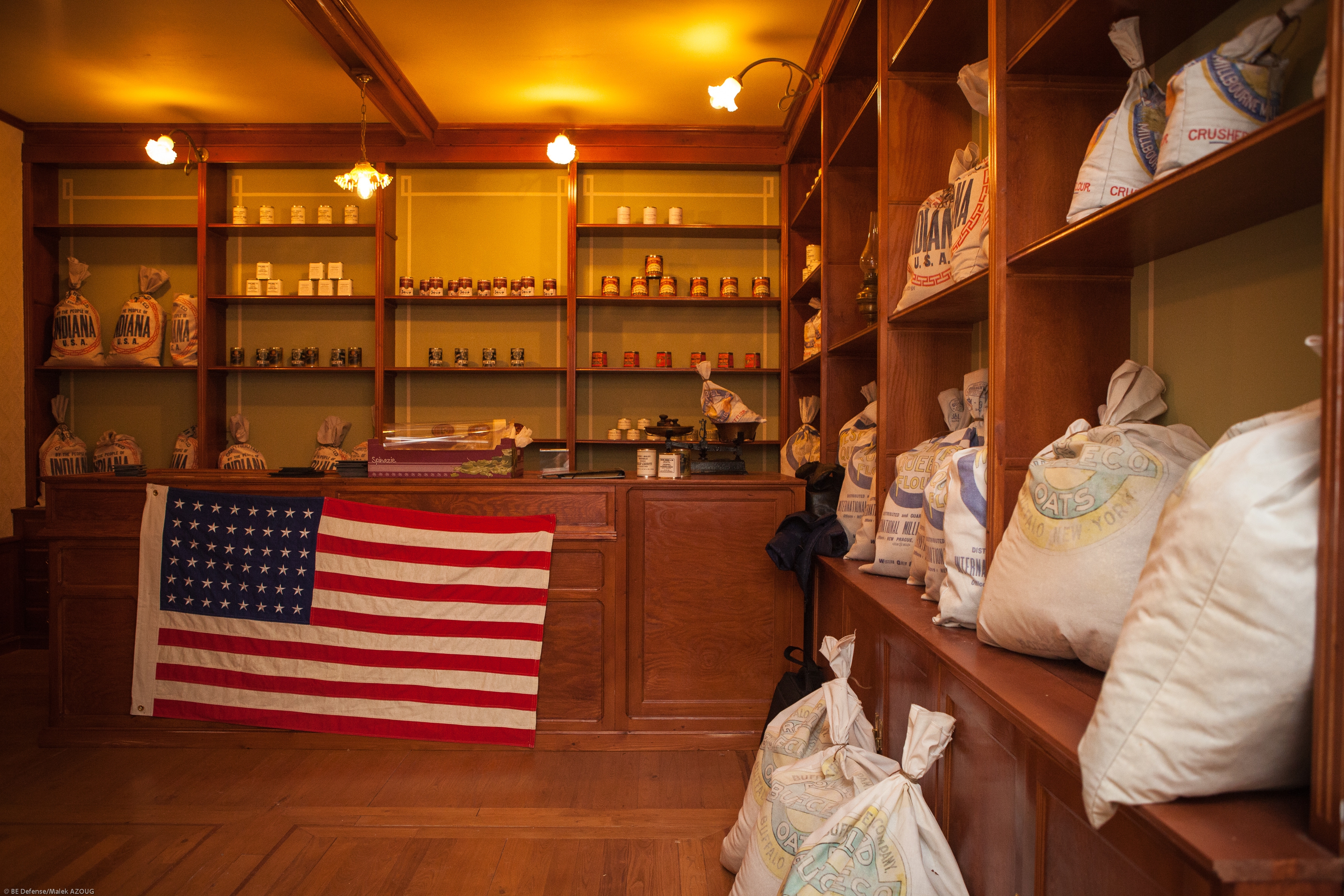 The recreated American shop
The recreated American shop
A wartime prison for Belgians who refused to co-operate with the Germans, or were suspected of inciting unrest or resisting occupation, has also been built by the museum.
6. The End of the War
Highlighting “the moment between war and peace”, visitors will see a smaller version of the map of Belgium they encountered at the start of the exhibition.
Parts of Belgium still remained under German control when the Armistice was signed.
Allied officials met in Spa to prepare the Treaty of Versailles and a Peace Conference was held in Belgium as the war drew to a close.
These “lesser known aspects” of the war which took place on Belgian soil will be explored here.
A final contrast between King Albert (“an icon”) and Kaiser Wilhelm (“exiled to the Netherlands”), will also be drawn at this part of the exhibition.
7. Overview and Consequences
The end of the exhibition highlights the European and global context of the conflict and its cost in human and economic terms.
Images of the consequences of the conflict will also be on display, documenting “the effects this terrible war had on Europe from 1919 to… today”.
Source: The Royal Museum of the Army and Military History
Images courtesy of the Royal Museum of the Army and Military History
Posted by: Daniel Barry, Centenary News
